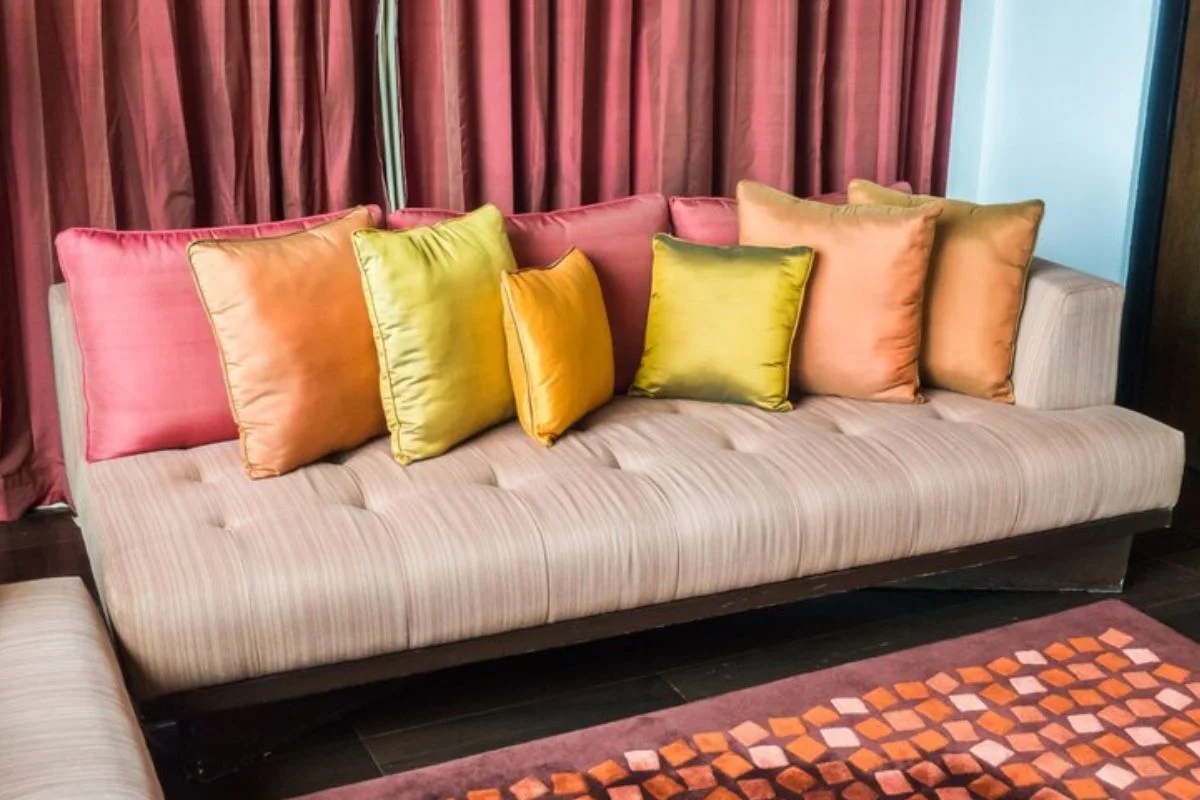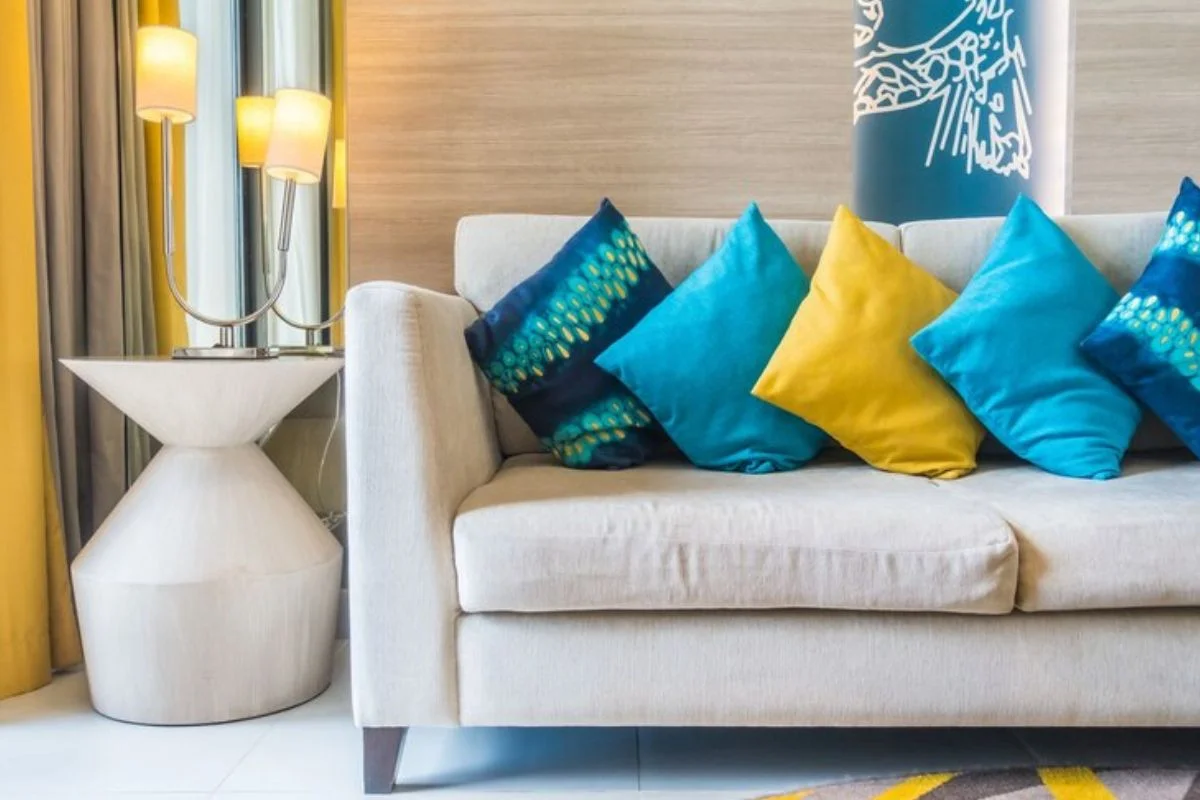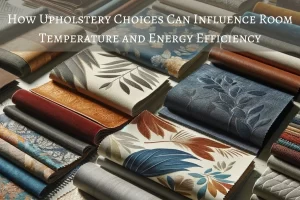Upholstery refers to the materials used to provide padding, support, and covering for furniture, especially seating such as chairs, sofas, and beds. It typically involves fabrics, leather, foam, and springs that enhance the comfort and aesthetic appeal of furniture pieces. The right upholstery not only adds to the visual charm of your home but also determines how comfortable and durable your furniture will be over time. Understanding upholstery is essential when selecting or maintaining furniture, as it directly impacts both style and functionality in your living space.
Definition of Upholstery
Upholstery refers to the materials used to cover and pad furniture, enhancing comfort and aesthetics. It typically includes fabric, padding (foam or batting), springs, and webbing. These components combine to provide seating support and cushioning for furniture like chairs, sofas, and beds. Upholstery is crucial to a furniture piece’s functionality, appearance, and feel. It can vary in quality, materials, and construction techniques, which directly affect the comfort and durability of the item. Understanding upholstery is essential for making informed decisions when purchasing furniture, as it significantly impacts both the style and lifespan of a piece.
Types of Upholstery Materials
Upholstery materials range from natural to synthetic, each with unique properties. Natural fabrics, like cotton, linen, wool, and leather, offer breathability and a luxurious feel but may require more maintenance. Synthetic options, such as polyester, microfiber, and vinyl, are more durable, resistant to stains, and easier to clean, making them ideal for high-traffic areas or homes with children and pets. Each material has pros and cons regarding durability, appearance, and ease of maintenance. Choosing the right material depends on the furniture’s intended use, the environment, and personal preferences for texture and appearance.
The Crucial Role of Upholstery in Enhancing Comfort
Upholstery plays a significant role in determining a furniture piece’s comfort. The padding and fabric contribute to how soft or firm the seating feels. Dense foam or supportive springs can provide a firm, ergonomic seat, while plush padding offers a more relaxed, cushioned experience. The fabric’s texture also affects comfort, with soft materials like velvet or microfiber enhancing coziness, while stiffer fabrics like leather offer durability but may feel less inviting. Comfort should be balanced with function, especially for furniture used frequently, such as sofas or office chairs, where long-term use can impact the user’s well-being.
The Key to Lasting Comfort: Understanding Upholstery Durability and Longevity
The durability of upholstery significantly influences how long furniture lasts. High-quality fabrics and strong padding protect the internal structure of the furniture, preserving its shape and support over time. Durable upholstery is essential for pieces that endure daily wear and tear, such as sofas or dining chairs. Leather and tightly woven fabrics are known for their durability, while lighter fabrics like silk may wear out faster. Choosing the right upholstery based on the furniture’s intended use ensures longevity, reducing the need for frequent repairs or replacements and preserving the aesthetic and functional integrity of the piece.
Transforming Spaces: The Aesthetic Power of Upholstery
Upholstery dramatically influences the visual appeal of furniture. The choice of fabric, color, pattern, and texture can either enhance or clash with a room’s design. Upholstery allows for personalization, helping furniture blend with or stand out in a space. Bold colors or patterns can add a statement, while neutral tones offer versatility. Textures like velvet, leather, or linen can evoke a specific style—luxurious, rustic, or minimalist. By selecting upholstery that complements the overall design of a room, homeowners can achieve a cohesive look while also reflecting their personal taste and interior design preferences.
Maintenance and Cleaning
Upholstery maintenance varies significantly depending on the material. Leather and synthetic fabrics like microfiber are generally easy to clean, often requiring only occasional wiping. Natural fabrics, such as linen and cotton, may be more susceptible to stains and wear, requiring special cleaning solutions or professional services. Removable and washable cushion covers can be an advantage in homes with pets or children. Regular care, including vacuuming and spot cleaning, prolongs the life of upholstered furniture. Choosing upholstery with maintenance needs in mind ensures longevity, reducing the likelihood of damage from spills, dust, or everyday use.
Upholstery That Cares: Prioritizing Health and Safety in Your Home
Certain upholstery materials are designed with health and safety in mind. For allergy sufferers, hypoallergenic fabrics and dust-resistant materials can reduce irritation by preventing the buildup of allergens like dust mites or pet dander. Flame-resistant upholstery materials are also crucial in ensuring safety, particularly in households with small children or open fireplaces. Some fabrics are treated to be antimicrobial, preventing the growth of bacteria and mold, making them ideal for humid environments. Ensuring that upholstery is both safe and health-conscious helps create a healthier living space, especially for those with specific sensitivities or concerns.
Balancing Budget and Quality: The True Cost of Upholstery
The type of upholstery significantly affects the cost of furniture. High-end materials like leather or natural fabrics generally come at a higher price due to their quality, durability, and craftsmanship. Synthetic fabrics, while more affordable, often offer durability and easy maintenance, making them cost-effective for families or high-traffic areas. Custom upholstery options can also increase the price, as they allow homeowners to tailor fabrics to their exact preferences. Considering long-term value over upfront cost is crucial—higher-quality upholstery may be more expensive initially but often lasts longer and reduces replacement costs over time.
Sustainable Upholstery: Minimizing Environmental Impact Through Thoughtful Choices
Sustainability is an important factor in choosing upholstery. Many manufacturers now offer eco-friendly materials, such as organic cotton, recycled polyester, and sustainably sourced leather, which reduce environmental impact. These materials are produced with fewer chemicals and lower energy consumption. Additionally, opting for durable fabrics that require less frequent replacement reduces waste. Some upholstery is treated with non-toxic dyes and finishes, which is safer for both the environment and indoor air quality. Choosing environmentally conscious upholstery supports eco-friendly practices, contributing to a healthier planet and reducing the ecological footprint of furniture production.
Tailored Comfort and Style: The Power of Customized Upholstery
Upholstery allows for extensive customization, making it easy to tailor furniture to individual tastes. Homeowners can select fabrics that match their color scheme, pattern preferences, and style—whether traditional, modern, or eclectic. Custom upholstery also offers the opportunity to adjust comfort levels by selecting specific types of padding or cushioning. For those with specific needs, like stain-resistant fabrics or hypoallergenic options, customization ensures the furniture is both practical and aesthetically aligned with personal preferences. Customizing upholstery can transform standard furniture into unique, one-of-a-kind pieces that fit perfectly into the desired space.
Conclusion
Upholstery plays a vital role in the functionality, comfort, and appearance of your furniture. By understanding the different types of upholstery materials, their impact on comfort and durability, and the importance of proper maintenance, you can make informed decisions that enhance the longevity and aesthetic appeal of your furniture. Whether considering cost, health, or environmental factors, upholstery choices directly influence how well your furniture fits into your lifestyle and space. Ultimately, selecting the right upholstery ensures that your furniture not only looks great but also provides lasting comfort and value.






